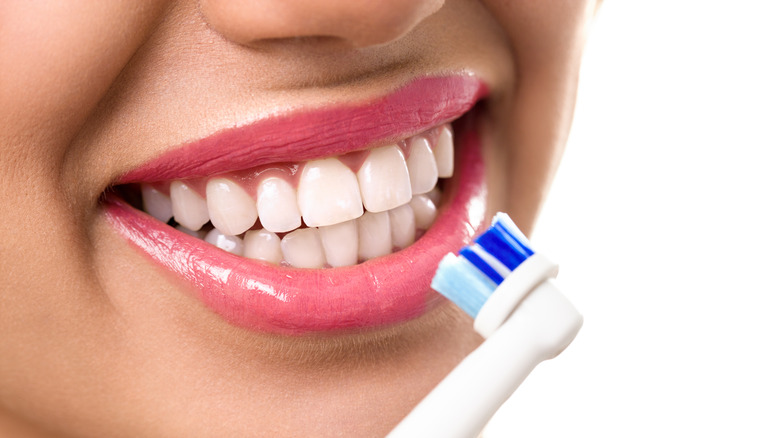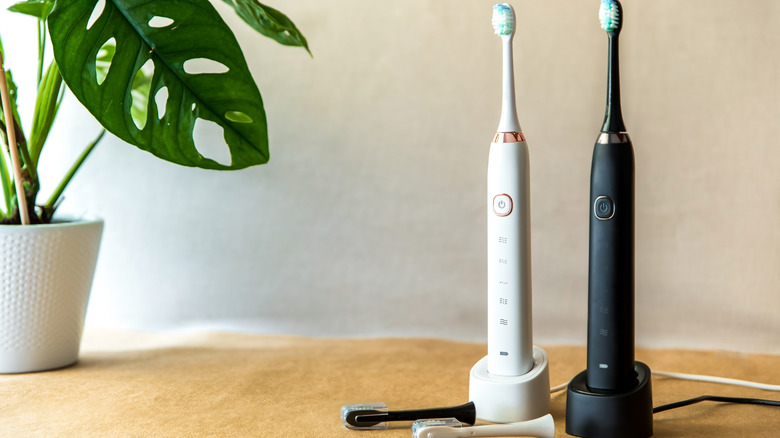Surprising Side Effects Of Using An Electric Toothbrush
You might be wondering if an electric toothbrush is worth the investment. An electric toothbrush is a powered device that does the brushing for you. According to the American Dental Association (ADA), different types move in different ways. For example, some move side to side, some move in a circular pattern, some are ultrasonic and use vibration, and some have counter oscillation (two circular bristles that move independently of each other). There are also some with rotating oscillating heads that move clockwise and then counterclockwise.
The ADA states both manual and electric toothbrushes are effective at removing plaque. However, people with dexterity problems may find an electric toothbrush more manageable to use, and some people just prefer the ease of one. Your dentist could recommend an electric toothbrush for you if they notice your manual brushing isn't effective.
Although the ADA says both manual and electric toothbrushes can effectively remove plaque, a couple studies show that electric toothbrushes might do a better job. A 2014 study review found that people who used an electric toothbrush had 11% less plaque and 6% less gingivitis at one to three months, and 21% less plaque and 11% less gingivitis at three months.
How to use an electric toothbrush
If you want to make the switch to an electric toothbrush, look for the ADA Seal of Approval or select one from their approved list (via ADA). Choose one that has soft bristles and uses rotating oscillation. Many electric toothbrushes have a built-in timer, so you know you're brushing your teeth for the recommended two minutes every time (via WebMD).
Panatella Dental recommends focusing on the front of your teeth, then the back of your teeth, then the chewing surfaces and behind your back teeth, and finally your tongue and the roof of your mouth. Add a pea-sized amount of toothpaste and guide the brush at a 45-degree angle along your tooth surfaces and gum line for a few seconds at a time (via Good Housekeeping). The angle — which you should use with either a manual or powered toothbrush — will help remove plaque and debris at the gum line. Remember, you don't have to press hard or scrub. Let the brush do the work for you. Brushing too hard can cause gum recession and tooth surface loss. Then rinse well, and you're done using your electric toothbrush. Brush twice a day for two minutes each time.


